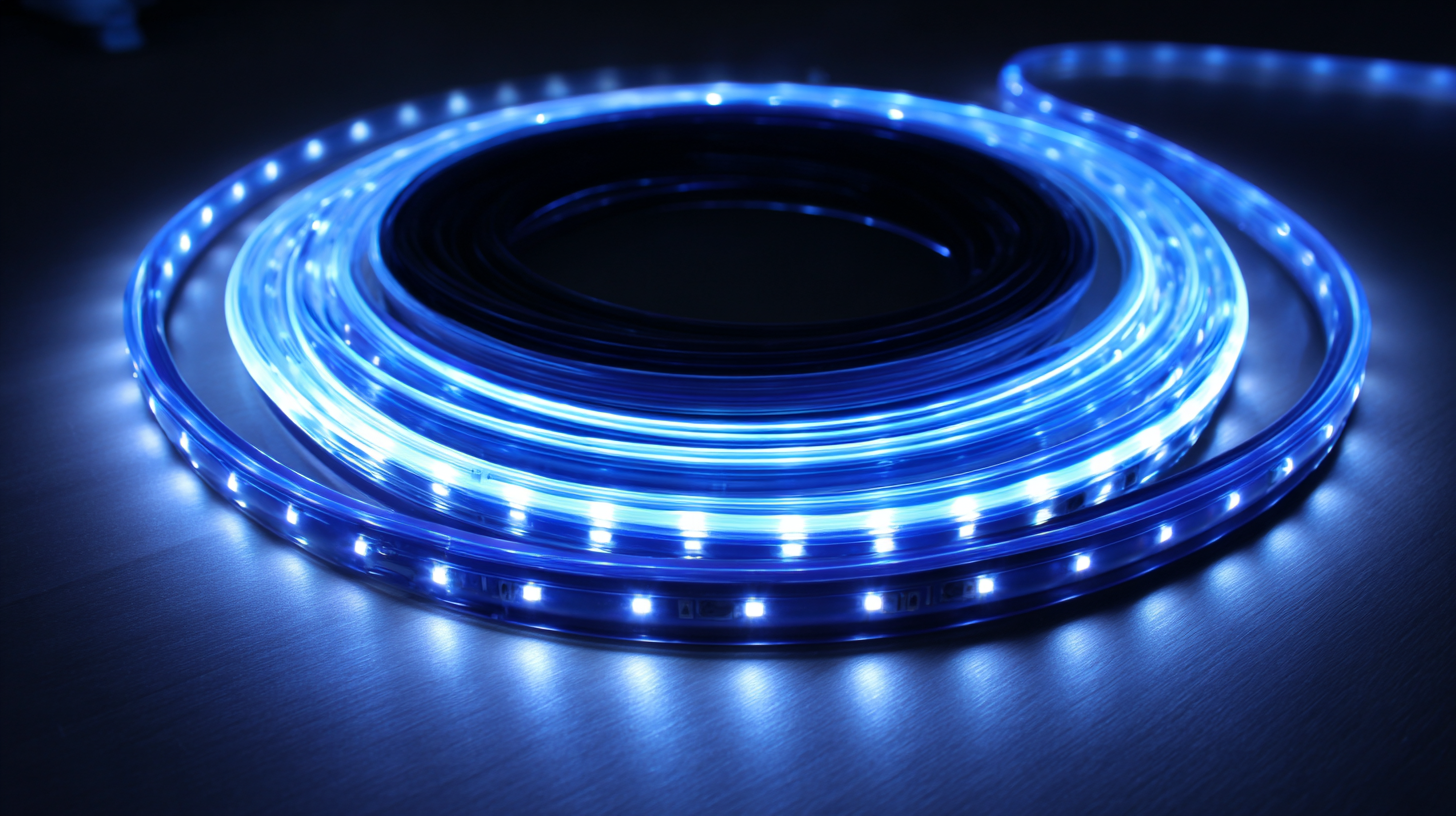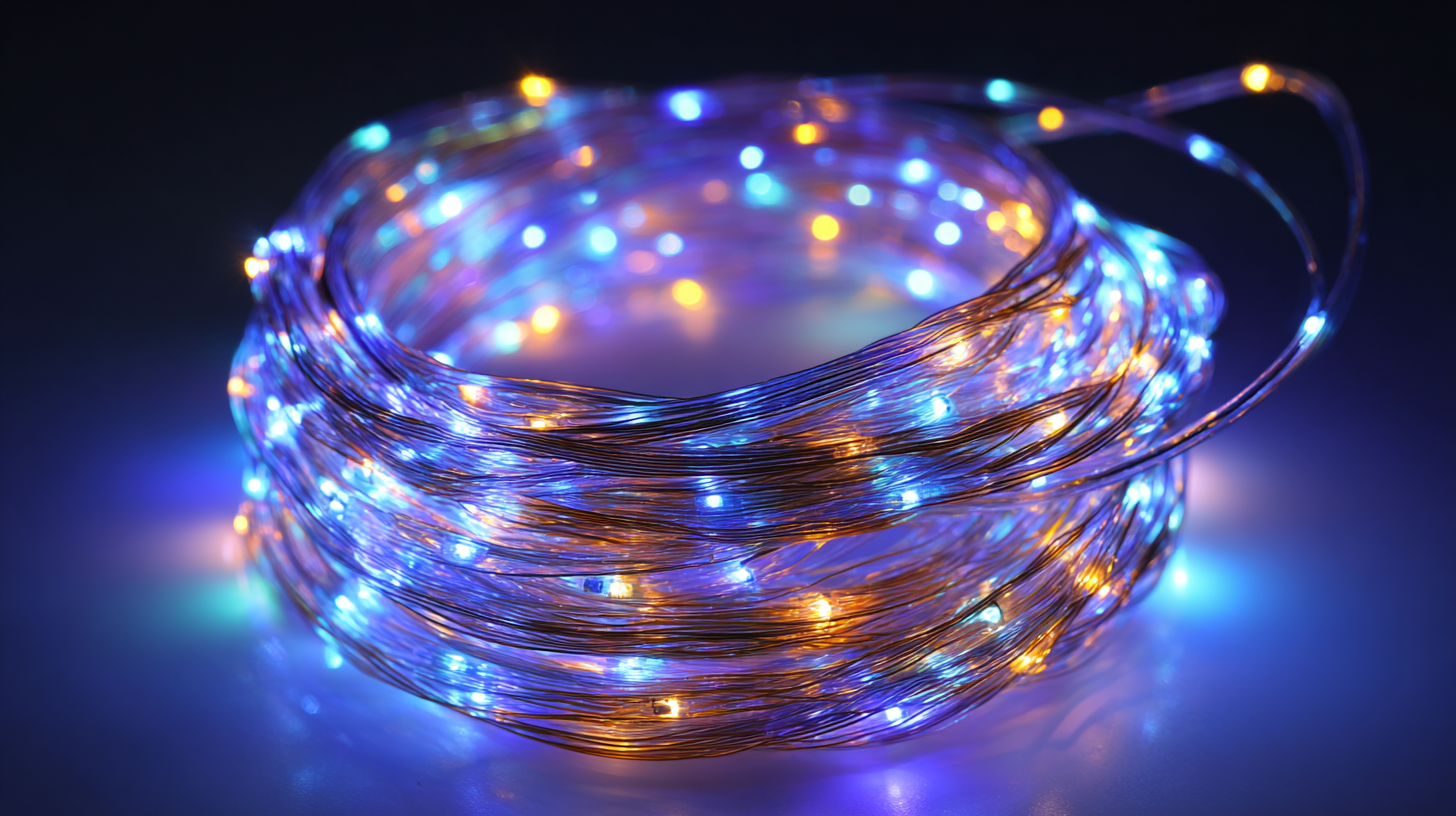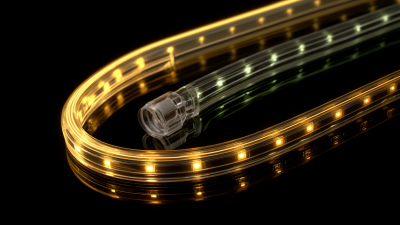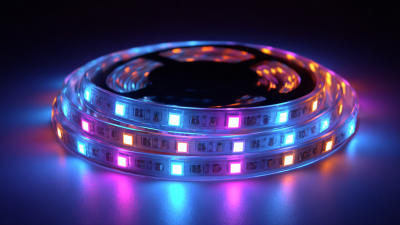What is the Importance of LED Wire in Modern Lighting Solutions
In the evolving realm of modern lighting solutions, the significance of LED wire cannot be overstated. As the global market for LED lighting is projected to reach USD 143.30 billion by 2027, according to a report by Fortune Business Insights, LED technology has rapidly transformed the lighting landscape. Central to this innovation is the use of LED wire, which not only enables flexible lighting design but also enhances energy efficiency. Reports indicate that LED systems consume up to 75% less energy than traditional incandescent lighting, demonstrating a critical shift towards sustainable solutions.

Moreover, with advancements in manufacturing processes, LED wires are now available in various types and configurations, catering to diverse applications from residential to commercial settings. This essay will explore the pivotal role of LED wire in fostering the development of more environmentally friendly and versatile lighting solutions, ensuring its place at the forefront of the lighting industry.
The Role of LED Wire in Enhancing Energy Efficiency
LED wire has become a significant component in modern lighting solutions, primarily due to its substantial role in enhancing energy efficiency. Unlike traditional lighting systems, LED wire utilizes advanced technology that allows it to emit light while consuming significantly less electricity. This reduction in power usage not only leads to lower energy bills for consumers but also minimizes the overall environmental impact by decreasing energy consumption from power plants.
Moreover, the flexibility of LED wire design facilitates innovative lighting applications, which can further contribute to energy savings. For instance, LED wire can be easily integrated into various environments, from residential to commercial spaces, allowing for tailored lighting solutions that suit specific needs. This adaptability means that users can optimize their lighting without compromising on quality or efficiency, harnessing the full potential of LED technology. As a result, LED wire serves not just as a functional component, but as a catalyst for more sustainable lighting practices in today's energy-conscious world.
What is the Importance of LED Wire in Modern Lighting Solutions - The Role of LED Wire in Enhancing Energy Efficiency
| Application | Power Consumption (W) | Lifespan (Hours) | Energy Efficiency Rating | Typical Use Case |
|---|---|---|---|---|
| Residential Lighting | 10 | 25,000 | A+ | Living Rooms, Bedrooms |
| Commercial Lighting | 20 | 30,000 | A++ | Offices, Retail Spaces |
| Outdoor Lighting | 15 | 40,000 | A++ | Parks, Streets |
| Industrial Lighting | 50 | 50,000 | A++ | Factories, Warehouses |
Key Advantages of Using LED Wire in Modern Lighting Systems
LED wire has become a pivotal element in contemporary lighting solutions due to its numerous advantages in both functionality and aesthetics. One of the most significant benefits of using LED wire is its energy efficiency. Traditional lighting methods consume a considerable amount of power, whereas LED wire requires significantly less energy to produce the same amount of light. This not only results in lower electricity bills but also contributes to a reduced carbon footprint, making it a more sustainable option for both residential and commercial applications.

Another key advantage of LED wire is its versatility in design. Available in various colors, shapes, and sizes, LED wire can be easily integrated into a wide range of lighting designs, from accent lighting to intricate displays. Its flexibility allows designers to create innovative and captivating lighting effects that enhance the visual appeal of any space. Additionally, LED wire is known for its longevity and durability; it can withstand various environmental conditions, reducing the need for frequent replacements and maintenance. This combination of energy savings, creative flexibility, and longevity solidifies LED wire's role as a crucial component in modern lighting systems.
Comparative Analysis: LED Wire vs. Traditional Wiring Solutions
The landscape of modern lighting solutions has been significantly transformed with the advent of LED wire technology. In a comparative analysis between LED wire and traditional wiring solutions, several critical advantages of LED wire emerge. According to a report from the U.S. Department of Energy, LED lighting consumes at least 75% less energy than incandescent lighting, which drastically reduces electricity costs and enhances energy efficiency over time. This efficiency is further amplified when considering LED wire's capabilities, as it allows for modular applications and flexibility in installation, making it ideal for both residential and commercial uses.
Moreover, the longevity of LED wire also surpasses that of traditional wiring methods. Research conducted by the Lighting Research Center indicates that LED systems can have a lifespan of up to 25,000 hours or more, compared to roughly 1,000 hours for traditional incandescent bulbs. This extended lifespan reduces maintenance costs and waste, positioning LED wire as a more sustainable choice. The ability of LED wire to dissipate heat effectively further contributes to its efficiency and safety, which are paramount in modern lighting design. As the industry moves towards more sustainable solutions, it's clear that LED wire is set to play a pivotal role in the evolution of lighting.
Importance of LED Wire vs. Traditional Wiring Solutions
Technological Innovations in LED Wire Design and Manufacturing
The evolving landscape of lighting solutions has significantly benefited from technological innovations in LED wire design and manufacturing. Recent advancements are focused on enhancing the efficiency, flexibility, and sustainability of LED wire products. The integration of lightweight materials and precise engineering has allowed for greater versatility in applications, ranging from traditional lighting fixtures to cutting-edge display technologies.
As lighting becomes increasingly integral to smart environments, the ability of LED wire to provide customized solutions is crucial, allowing designers to meet diverse aesthetic and functional needs.
Moreover, the shift towards renewable energy sources underscores the necessity for energy-efficient lighting solutions. The growth in the demand for LEDs is fueled not only by their lower energy consumption but also by advances in manufacturing technologies. Automated processes and resource orchestration in small and medium enterprises enable rapid development and deployment of LED wire products that cater to an environmentally conscious market.
These innovations are essential as industries seek sustainable alternatives while navigating the complexities of modern manufacturing and consumer demands.
Applications of LED Wire in Residential and Commercial Settings
 LED wire has emerged as a vital component in modern lighting solutions, providing flexibility and versatility in various applications. In residential settings, LED wire can be used for accent lighting in home décor, highlighting architectural features, or enhancing outdoor spaces. The flexibility of the wire allows homeowners to create unique designs and atmospheres in their living spaces, from cozy ambient lighting in living rooms to vibrant showcases in home theaters.
LED wire has emerged as a vital component in modern lighting solutions, providing flexibility and versatility in various applications. In residential settings, LED wire can be used for accent lighting in home décor, highlighting architectural features, or enhancing outdoor spaces. The flexibility of the wire allows homeowners to create unique designs and atmospheres in their living spaces, from cozy ambient lighting in living rooms to vibrant showcases in home theaters.
In commercial environments, LED wire serves as an effective tool for branding and visibility. Businesses can harness its adaptability to create eye-catching displays, signage, and decorative elements that draw customers’ attention. Additionally, LED wire is energy-efficient, making it a cost-effective choice for retailers and office spaces looking to reduce energy consumption while maintaining a dynamic lighting aesthetic.
Tip: When installing LED wire, ensure to use appropriate connectors to avoid any potential issues. Also, consider the color temperature to create the desired mood—warmer tones for relaxing environments and cooler tones for productivity in workspaces. Choosing dimmable options can further enhance versatility in both residential and commercial lighting applications.
Related Posts
-

Top Strategies for Enhancing Performance with LED Connectors
-

How to Choose the Best LED Strip Connector for Your Lighting Projects
-

Exploring Unique Alternatives to Traditional Light Strips for Your Home Decor
-

What Makes Wire LED Lights the Future of Illumination
-

The Ultimate Guide to Choosing the Perfect LED Strip for Your Project
-

How to Choose the Best LED Light Harness for Optimal Performance and Efficiency
